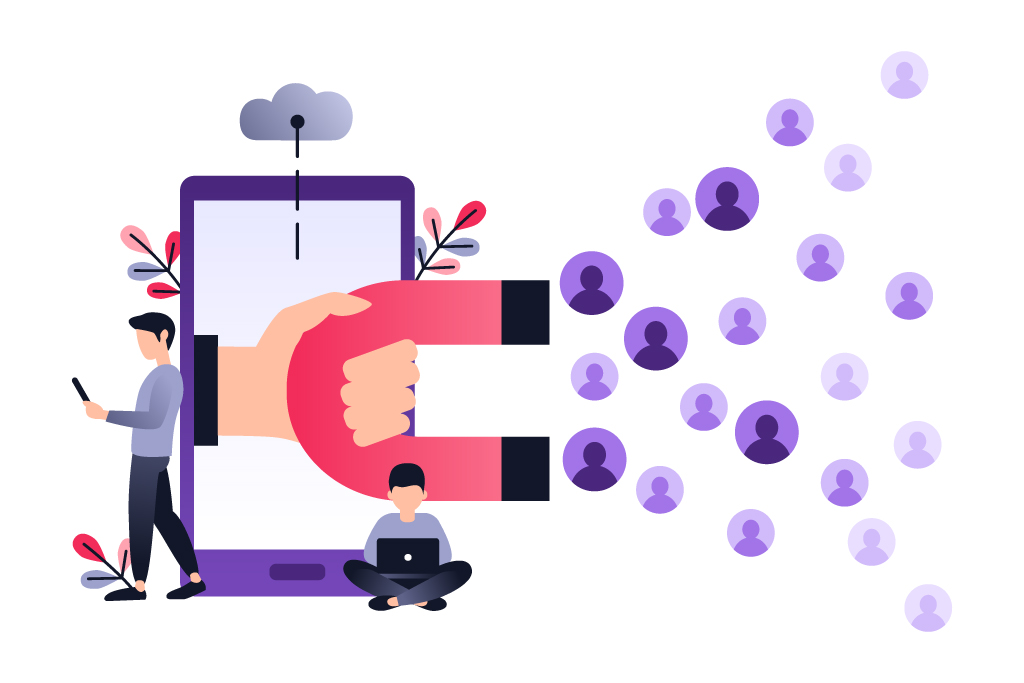
There is one concept that has been a concern and subject of considerable effort in many companies around the world in 2021: access. As the Covid-19 pandemic continues, many organizations have faced challenges with their digital channels in trying to reach out to their clients, business partners, and, equally important, employees. While some of them already had successful digital business processes in place, others were forced to create new channels, new efforts, and new initiatives to adjust to the "new normal".
When it comes to increasing the reach of your internal digital channels, there is an apparent contradiction: having a digital communication asset, such as an intranet or a mobile application, does not mean that your audience has access (regular or continued) to it. It is not about disposition -if they want to do it or not, but if they can do it. An underlying issue can be a structural problem, sometimes related to formats or even devices. But most importantly, it is always 100% related to the needs of your employees.
There are some departments that are primarily concerned with the need to be able to "cover" more ground:
- Internal Communications, for example, addressing pandemic protocols company-wide, but also the status of the business.
- Human Resources, with recurring processes related to employee benefits that a lot of time require various levels of approvals and/or paperwork and may not be fully digitized.
- Operations, with the need to connect and coordinate with different departments.
- Procurement, constantly engaging and evaluating potential business partners, with rounds of approvals and a handful of deadlines.
Technology plays a key role in providing these departments with specific solutions; however, the main challenge is not about technology - it is about the audience. Preparing the company to rethink the way it does its processes and be ready to engage with all the workforce through digital channels requires vision, empathy, and, most importantly, strategy.
Here are some factors you may want to consider when thinking about digital assets and technology, reach, and your workforce.
How is my company's workforce composed? What type of needs do they have?
If your company addresses its workforce as a "monolithically” group, no matter what technology you use, it is not going to work. For large organizations and global brands, the workforce means a gigantic Venn diagram with a lot of attributes: region, countries, site, department, role, age, gender, and seniority are some of the things you need to consider. In a way, you must work at the intersections of these attributes to understand your workforce. This is where typically processes such as UX research and User-Centric Design start: What are the needs of this specific audience? What is a day-in-the-life for them? How is it different from other audiences? What is their relationship to technology? When do they usually connect with a digital asset, such as a portal or an intranet? These are your starting questions to try to pinpoint the problems behind a limited reach or penetration within your company.
How many of my employees are "on the move"? How many of them don't own a computer?
More than ever, being mobile-ready is essential for businesses, but not only for services offered to customers and clients – it is also a constant need of our employees. If your workforce has mobility or in its core business deals with logistics or transportation, your digital asset needs to consider a responsive design or extend its offering to a mobile experience. Again, just because we offer a robust, rich solution, it doesn’t mean your workforce will be able to use it. In sum, the way you think and design, and experience have a tremendous impact on adoption. For example: Is your channel going to be mobile-ready or mobile-first? This will determine how universal your UX approach should be when trying to engage with massive internal audiences.
How multicultural is my company? Is English the only language used in digital channels?
It doesn't matter if you received a message – if you can't understand it, it is like not receiving it all. Large organizations and global brands usually face this conundrum: defining which sections of a portal or a mobile application should be in English and which ones should be kept in a different language. When a company has operations in multiple countries, there is some specificity to processes that are unique to that location, such as legal matters, employee benefits, or even holidays, plus the fact that not all the workforce masters more than one language. To share a message across a large organization, your company not only needs to publish the message but being able to rely it across different languages and formats, so it is received and understood properly. For this, modern digital platforms already include multilanguage functionality, and specific workflows can be set so translation can happen quickly and be managed by the right people when it is needed.
Digital channels in mobile devices and browsers: What's my company's approach to this?
The Browser Wars are long gone, but the underlying idea is still here: how can we create rich, engaging experiences so that everyone can use them, no matter the device and browser? Managing internal digital channels for the workforce means to be always in the look for emerging new technology, their engines, and the way they work, especially those that are more pocket friendly, such as new brands of smartphones or tablets. Being browser-agnostic and device-agnostic is a principle that any IT team that works with large organizations, global brands, and Public Sector projects should adhere to achieve a wider reach. Also important: Usability and Testing tasks play a huge role in making sure our digital channel works as it should when exposed to different environments – when in doubt, test it out.
Is my company prepared to attend to groups of employees with special needs through digital channels?
The bigger your organization is, the more prepared it needs to be accessible. Accessibility means complying with certain standards so your content and digital assets can be consumed easily by those that use assistive technology, that don't have high-speed connectivity or has older models of devices. Users with disabilities and the elderly are primary examples of these needs. That being said, it is important to consider that complying with accessibility doesn't mean you can't be modern – following standards, having UX research and testing and learning the core objective of being accessible are what make rich, high-quality digital experiences last and be enjoyed by many.
While using modern technology is a big part of the way we face digital transformation, there is always a human component. Digital technologies are always sitting in the middle of these three inputs: the company vision, the business goals, and the users' needs (whether they are internal or external). Our users are the final recipients of what we create, so understanding and taking their circumstances into account for our solutions is key to adoption and achieving success. If your workforce has a composition or specific needs that require particular attention and considerations, feel free to reach out, so we can start planning how to reach out to them, engage them, and cater to them successfully.



